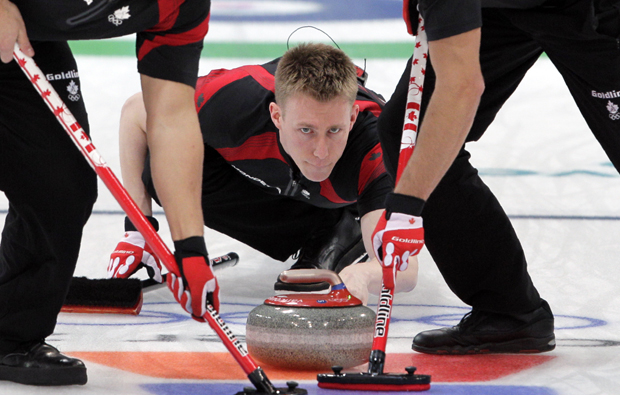At Winter Olympics, innovation found in unexpected sports
Technological innovation can play a key role in winning Olympic gold. The bigger advances, like high-tech bobsleds and speed skating skins, are hard to miss. But there are dozens of lesser-known ways that technology will play a part in Sochi.
Biathlon
After completing a grueling sprint on skis, biathlon competitors head straight into the shooting range. There’s no time to catch their breath: in 30 seconds or less, the top competitors ski into the range, drop their poles, grab the rifle from their back, shoot five bullets at a circular target, swing the rifle back over their shoulder, and take off again.
To practice this rapid-fire drill, they use lasers pointed at the targets. As the target crosses the laser’s sight, the athlete fires. All five shots are unleashed within 7 seconds. As they learned from another piece of training technology, maintaining that 7-second speed is crucial. Any slower than that, their heart rates start to drop, which leads to muscle twitches. Those twitches can comprise their ability to aim.
Curling
This sport looks as low tech as they come: pushing a disc across the ice with a broom. But understanding physics is critical in curling.
The idea of sweeping during curling is to slightly warm the ice temperature, without melting it. Curling ice is not completely smooth – small drops of water are added to create tiny moguls. If those are melted, the curling rocks don’t fly as far.
The Minnesota-based company BalancePlus worked with research developed at the University of Western Ontario to create an insulated brush head to warm the ice more efficiently. The key, says president Scott Larson, is technology that keeps the heat close to the ice, without smoothing the ice as much as the abrasive fabrics that were used in the past.
The result -- called the Equalizer brush head -- was used by Team Canada for the 2010 Olympics. For the women, it offered an overwhelming advantage. With a typical brush, they raised the temperature by 1.2 degrees; with the Equalizer head, they were raising it 2.6 degrees.
The men were able to raise the temperature of the ice 29.63 percent. They normally raise it by an average of 2.2 degrees, but with the insulated head, they raised it 3 degrees.
This year, Team USA and other curling competitors will be using the Equalizer too.Figure Skating
Do you wonder how figure skaters manage to land such challenging jumps? Of course, it takes natural ability and years of practice. But modern technologies, such as motion capture imaging, play an important role.
"It’s video technology along with some really powerful software that’s able to recognize where absolutely every point on a person’s body is during a dynamic move such as a jump," explains engineer Kim B. Blair, Ph.D., a Vice President at Cooper Perkins, Inc., and the president of the International Sports Engineering Association. "That kind of information can be used in training to help the athlete get that extra little bit of spin that they need, that extra bit of lift that they need to perform that next trick that they’re trying to master."
Snowboarding
Before they hit the half pipe, snowboarders stand waiting at the top of the course. They’ve already warmed up for their ride – and it’s important to stay warmed up, says Blair.
With this in mind, Under Armour and Nike have designed high-tech jackets for Team USA and Team Canada.
“Inspired by the ceramic coating that absorbs infrared light and allows military planes to go undetected, a distinct pattern on the inside of the garment stores and recycles body heat,” Under Armour explained in a press release.
Snowfall
Beyond innovations in individual sports, scientists and engineers are also there just in case Mother Nature doesn’t dump enough snow on the ski and snowboard venues.
Michigan-based SMI Snowmakers is working with Russian authorities to pump 12,151 gallons of water per minute to the mountainside, where 403 snowmaking guns are primed for action. Fiber-optic cables link the snowmakers to SMI software for automatic delivery. If the technology fails, Russia has a backup plan: last winter, officials stockpiled 16 million cubic feet of snow, storing it under giant thermal blankets, Popular Mechanics reports.

